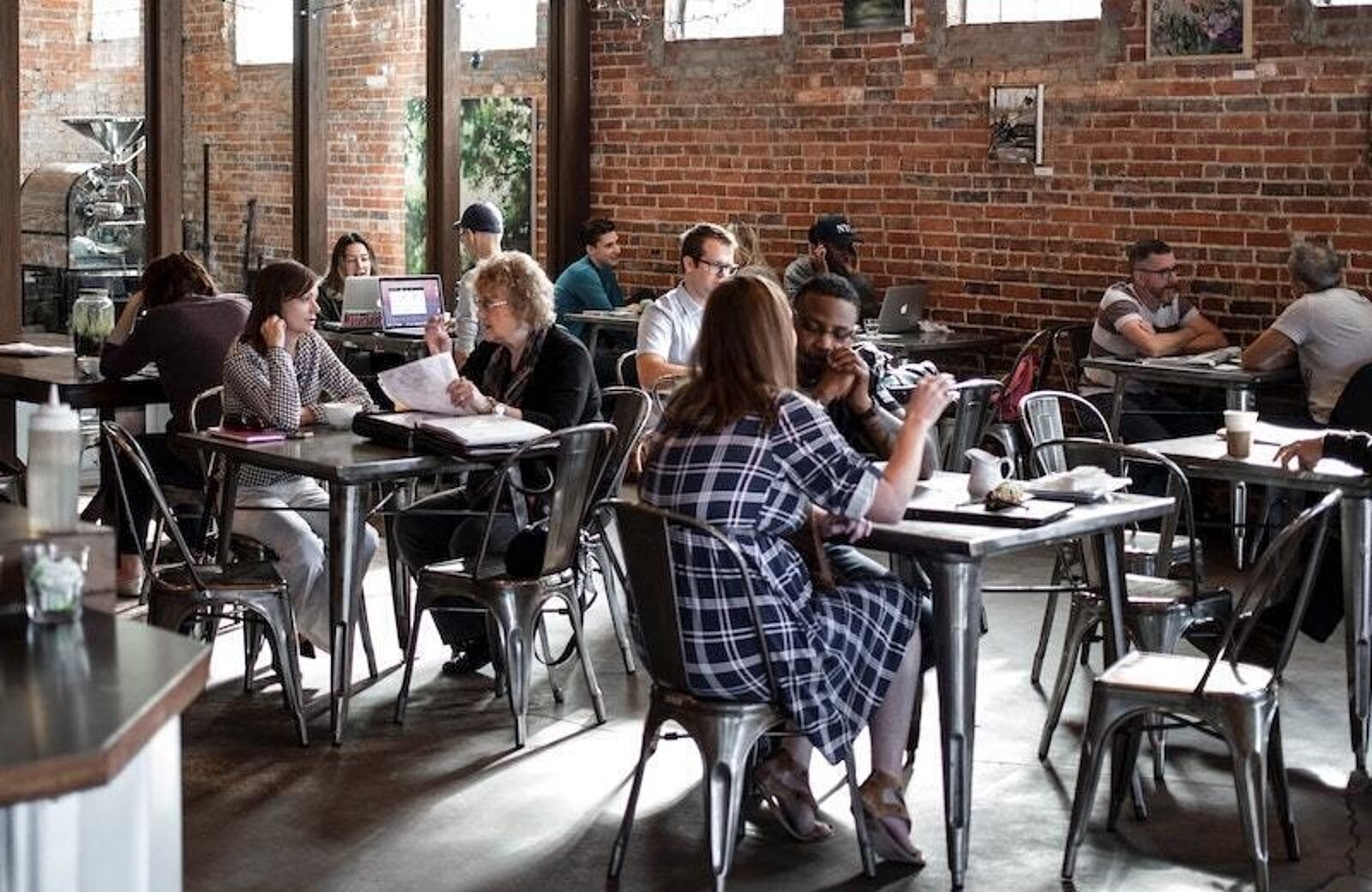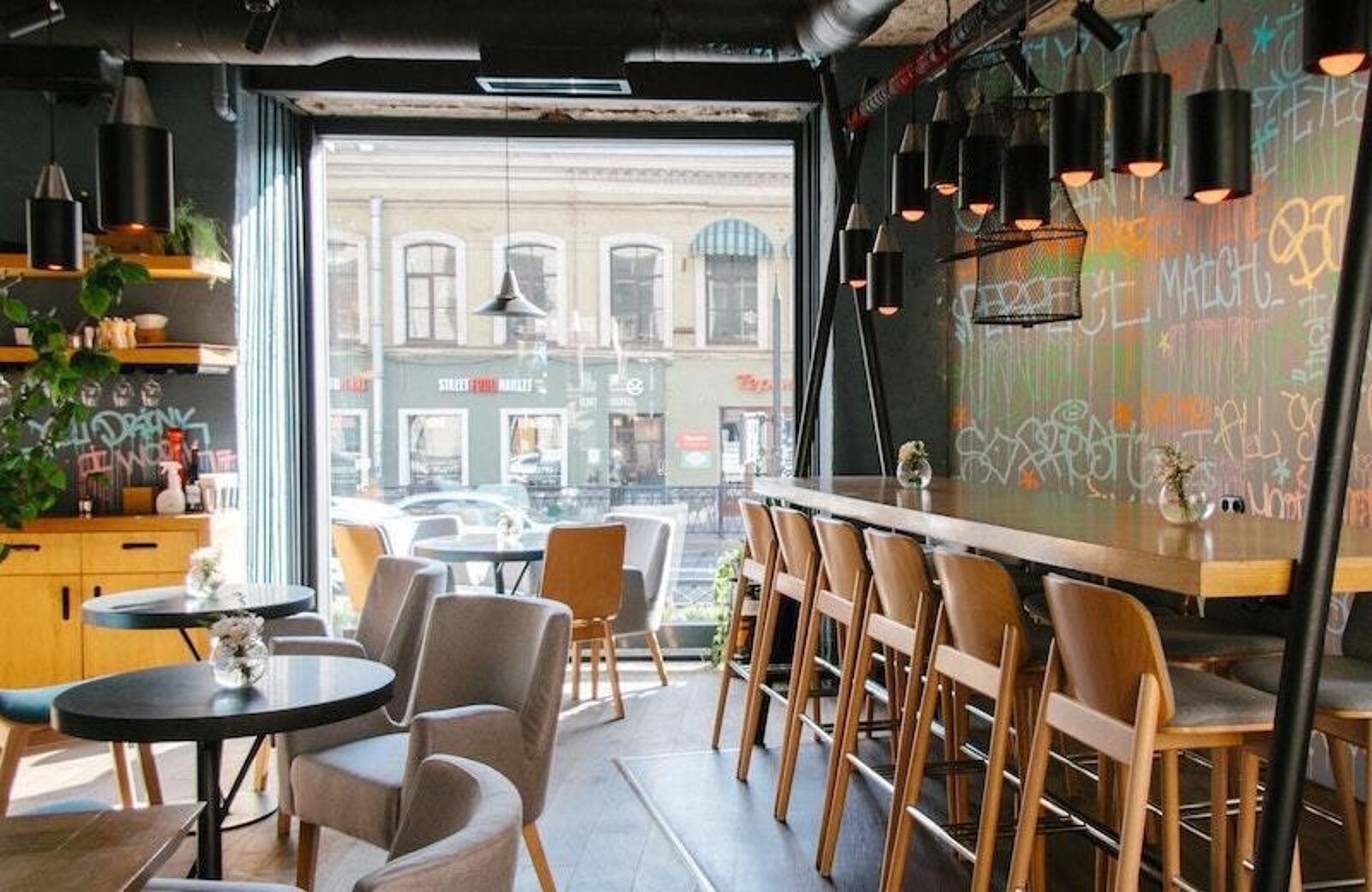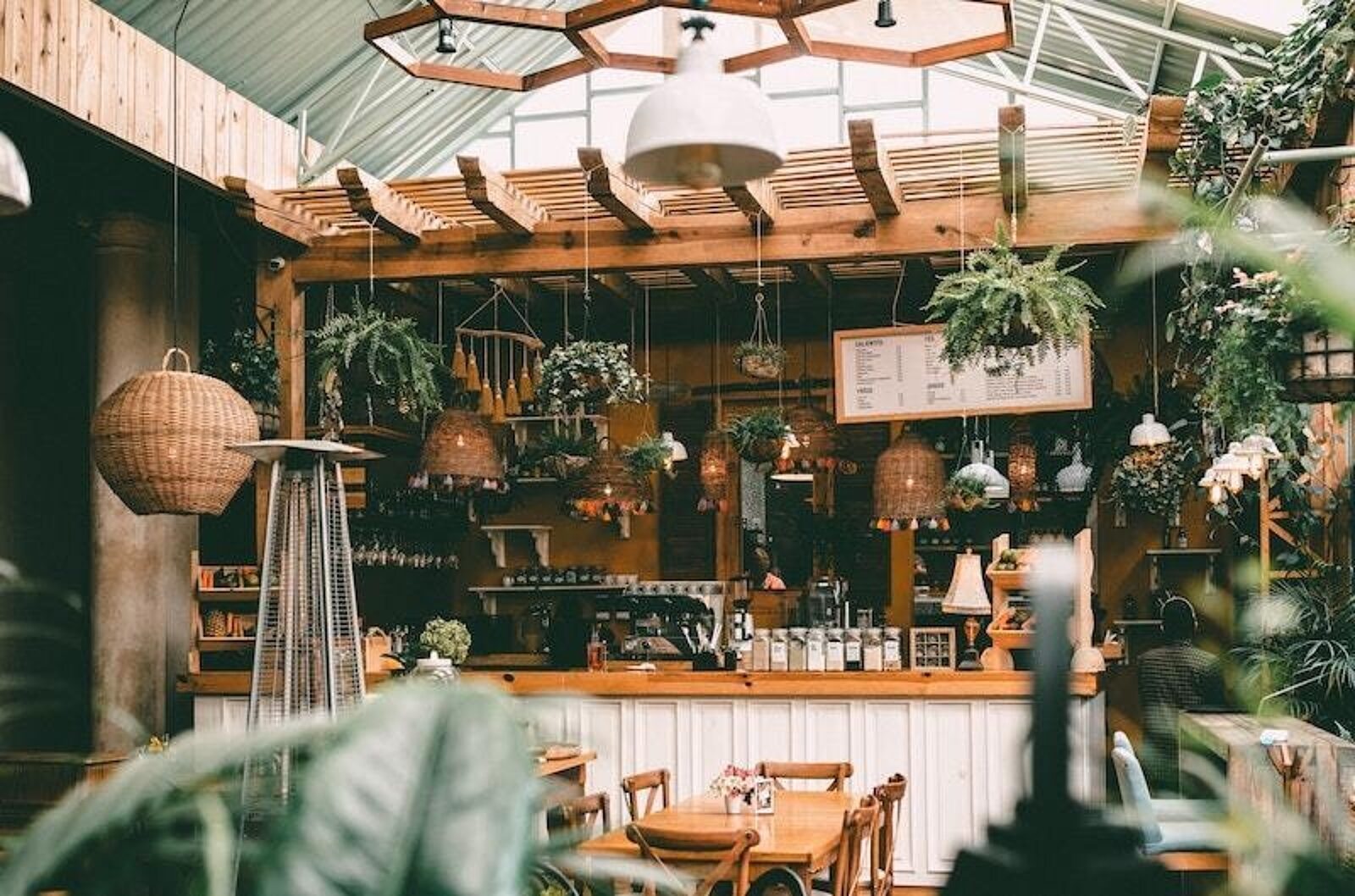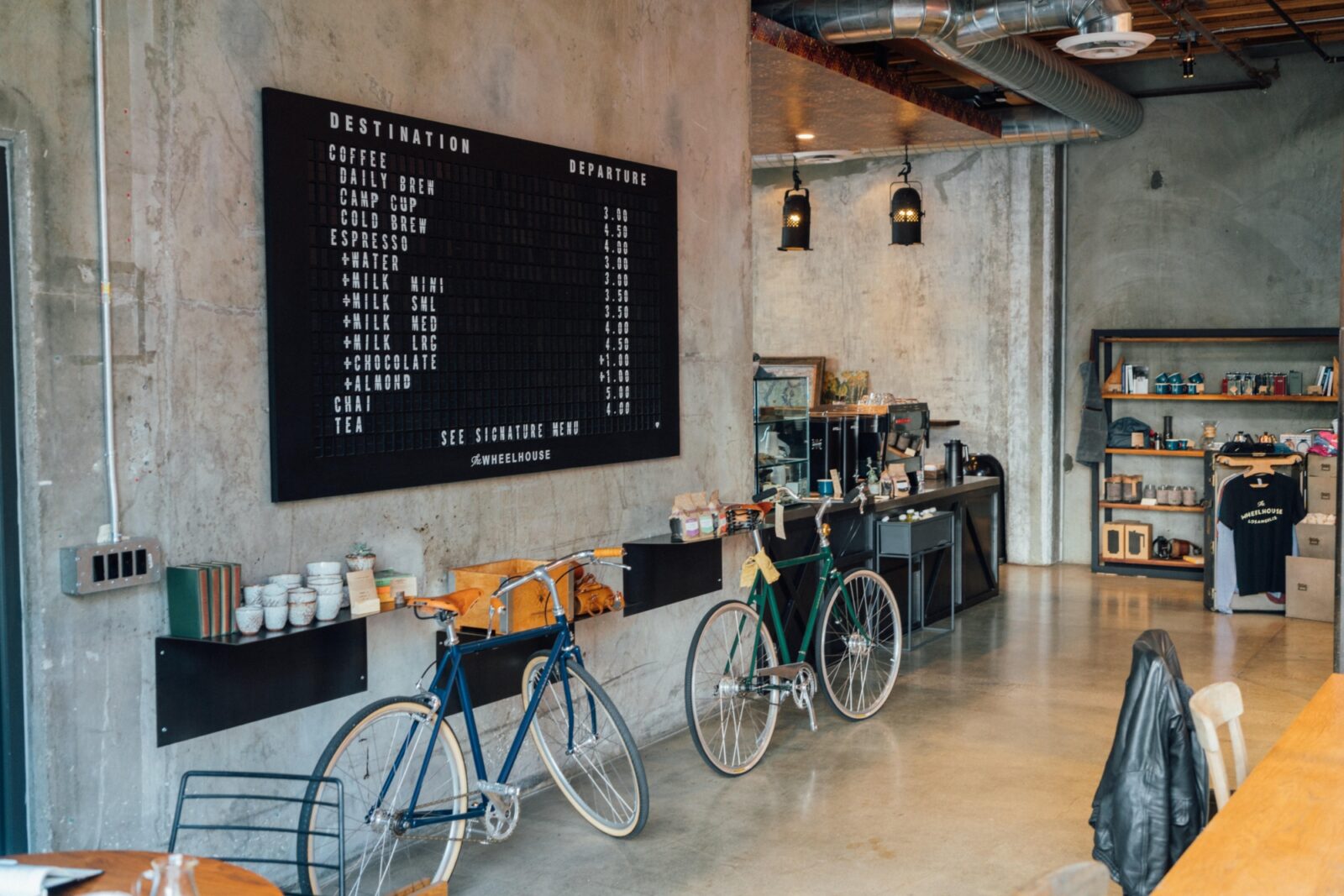
Essential Cafe Equipment List: Equipment Needed to Start a Cafe
Start your cafe off in style with this ultimate equipment guide for your next coffee bar and kitchen.
Tyler MartinezAuthor
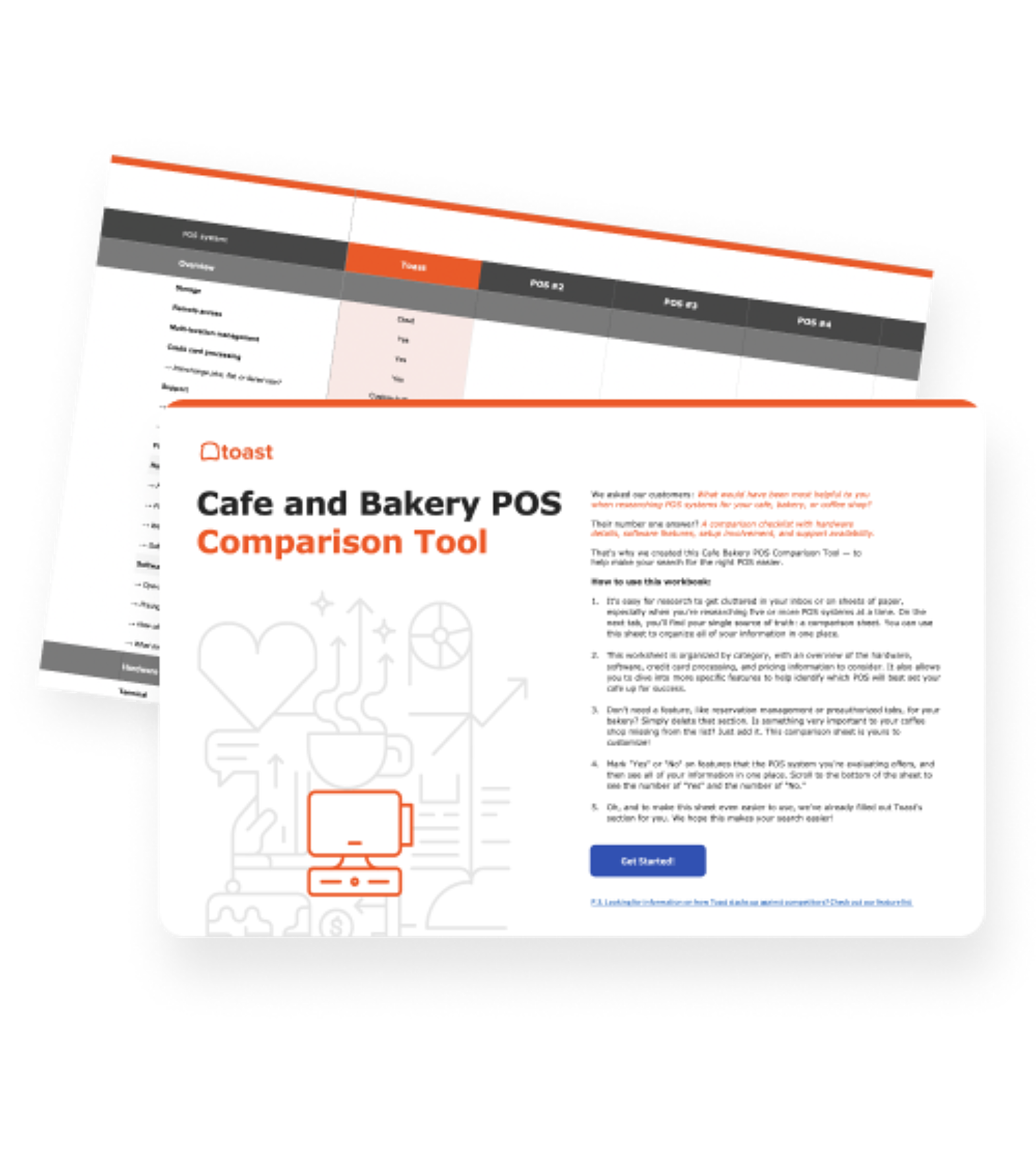

Cafe and Bakery POS Comparison Tool
A free, customizable Cafe and Bakery POS Comparison Tool to research and compare point of sale systems in one Excel spreadsheet or editable PDF.
Get free downloadEssential Cafe Equipment List (Appliances, Tools, Essentials)
Thinking of bringing a new coffee shop to your local community? Opening a cafe is a process that has dozens of steps, large and small, but can be incredibly gratifying and fun. One of the most important steps is figuring out exactly what cafe equipment you’ll need. Cafes are often smaller than full-service restaurants, and they typically have smaller menus. But with a wide range of coffee beverages on offer, there’s some equipment that cafes need that other food businesses can do without.
As part of your café’s business plan, it’s important to consider what equipment is essential for your operations and budget for the costs of the equipment you need. Start building a list of all the essential equipment for your new café with this guide.
Key takeaways
- Equipment Needed: Coffee brewing equipment, ovens, ranges, grills, ventilation, microwaves, freezers and refrigerators, coffee bar accessories, food prep surfaces, food prep equipment, safety equipment, sinks, restaurant point of sale system, kitchen display system (KDS), service-ware.
- How Much is Equipment for a Café: Adding specialty coffee service to a bakery or café can cost $25,000 - $80,000 on top of the up to $300,000 price tag on equipment for a small restaurant.
- Important Considerations: Quality, space, planning your kitchen, use and cleaning, suppliers, pricing, and financing or leasing are important things.
Coffee Shop Business Plan Template
Use this free coffee shop business plan template to easily create a great business plan that organizes your vision and helps you start, grow, or raise funding for your coffee shop.

What Equipment Do You Need In a Cafe
Cafes are so much more than a powerful espresso machine and a well-trained barista. There’s a whole host of other equipment necessary to produce your coffee and light fare. Here's an exhaustive list of the equipment you need in a cafe. We went ahead and bolded the essentials.
- Coffee brewing equipment
- Espresso machine
- Drip brewer
- Grinders
- Pour-over sets
- Cold brew toddy
- Ovens
- Ranges, Grills, and Ventilation
- Gas range
- Flat range
- Induction
- Smokers
- Small-space ventilation
- Microwaves
- Freezers and refrigerators
- Ice maker
- Coffee bar accessories
- Food prep surfaces
- Food prep equipment
- Knives
- Cutting boards
- Pots and pans
- Mixing bowls
- Food processors
- Blenders
- Mixers
- Storage containers and shelving
- Etc.
- Safety equipment
- Gloves
- Aprons
- First Aid Kit
- Date Labels
- Sani-buckets
- Bar rags
- Food grade chemical supplies
- Chemical Safety Data Sheets
- Sinks
- Compartment sinks
- Disposal sinks
- Handwashing sink
- Restaurant point of sale system
- Kitchen Display System (KDS)
- Serviceware
- Display cases
- Table service essentials
- Paper boats, plates, or clamshells
- Utensils
- Napkins or Linen
How Much is Equipment for a Café
According to industry leader Crimson Cup, adding specialty coffee service to a bakery or café can cost $25,000-$80,000 on top of the up to $300,000 price tag on equipment for a small restaurant. It’s important to budget for all the necessary café equipment you’ll need to start operations. To keep your budget in check, it can be helpful to explore restaurant financing options.
Things to Consider Before Buying Cafe Equipment
Investing in the right equipment for your café is critical to the success of your small business. Decide which pieces of equipment to prioritize and which you might compromise on when budgeting for all the equipment you’ll need.
To gain a full picture, separate your one-time costs, such as licenses and permits, equipment and renovations, from your monthly costs, such as utilities, advertising and employee wages.It’s better to overestimate than underestimate, and it’s important to have additional funding to cover operating costs until the business becomes profitable. This can take anywhere from six to 12 months.
Natalie Cusson
Small Business Writer at Forbes Advisor
1. Quality
The quality of certain pieces of equipment, such as ovens, coffee brewers, and even the ice machine can be critical to the success of your recipes. Select equipment that is high-quality and durable, researching large purchases before making any major decisions. Consider who will maintain the equipment and how comfortable they are with repairing those pieces.
2. Space
Even if you have the luxury of a large café space, buy equipment that will fit where you need it and be accessible in your kitchen or coffee bar. Consider the amount of counter space your cooks and baristas will need and here bulky coffee and prep equipment will live.
3. Planning Your Kitchen
A line cook or barista is only as efficient as the kitchen or line they are working on. Planning the layout of your coffee bar or kitchen in conjunction with your chef or head barista is a good idea so that space works for them. Consider consulting a kitchen planner for advice on how to set up your kitchen and coffee bar so that they create a desirable experience for your employees and guests.
4. Use and Cleaning
Some coffee and kitchen equipment will last a lifetime if maintained properly. Consider asking your supplier about maintenance and select equipment for how easy it is to repair. Train your staff to clean equipment properly so that it stays in top condition. Look out for the NSF symbol on food equipment which ensures that it meets food safety certification standards.
5. Suppliers
Quality equipment is critical to the success of your café and building a rapport with your equipment supplier is a good idea. Many towns and cities have local restaurant supply stores that, for a membership fee, offer premium ranges of commercial equipment at near-wholesale prices. The best suppliers will be honest about the technology and safety of the products they sell and provide everything you need – installation, maintenance, and repairs.
Sourcing Restaurant Equipment
Sourcing equipment is half the battle. Once you have a comprehensive list and a vision of your fully-equipped bakery, start shopping around. Local restaurant wholesalers often have good deals, or you might lease from a reputable online retailer, or rent equipment until you can afford to invest.
New vs. Used Equipment
New equipment might always seem like the best choice, but some expensive (and essential) pieces of equipment might be better used. Consider finding an oven or deep freezer that has been maintained over the years and plan to keep it up – you’ll save up front and over the course of your venture.
6. Pricing
Are you building a coffee focused grab-and-go spot or a cozy neighborhood café? Decide which equipment to prioritize based on your business model – splurge on the espresso machine to attract commuting hipsters or focus on the ovens and ranges needed for your grandma’s bread and soup recipes to keep a steady base of customers. Buying used equipment might save you some money upfront but cost more in maintenance and repairs later.
7. Financing or Leasing
Financing or leasing equipment can be a good option to get your business started and take on less risk until you’re sure the model will succeed. Lease payments can be tax-deductible just like equipment purchases and allow you to be financially liquid as you open your café.
Restaurant Opening Calculator
This calculator lays out some of the fundamental financial costs of opening a restaurant, so you can start planning and bring your dream restaurant to life.

Ultimate Coffee Shop Equipment List
1. Coffee brewing equipment
Quality coffee brewing equipment is one of the primary investments you’ll make for your café. Not all brewers and coffee machines are equal – choose equipment that will let you deliver the quality of coffee drinks that you want to serve.
Espresso machine
Espresso is coffee extracted with pressure in addition to hot water. Their reserves also power the steam wands that make steaming milk for lattes and cappuccinos possible. Espresso machines are huge investments and require regular maintenance to operate in top condition for decades.
Drip coffee makers
Drip coffee is the biggest seller and usually the largest driver of profit for coffee shops and cafes. Treat your coffee beans right with a high-quality commercial drip brewer and insulated coffee tanks that keep coffee steaming hot for a few hours.
Industrial Coffee Grinders
Coffee grinders are notoriously inconsistent and difficult to maintain even at the commercial level. Conical burr grinders, a pair of gears that crushes rather than cuts roasted coffee, are preferred to blade grinders for their consistency. As with any equipment, maintaining and especially cleaning coffee grinders of built-up grounds and oil is crucial for their longevity.
Pour-over sets
Pour over coffee methods are popular because of the control they afford the barista over the brewing process. Ceramic and glass V60 sets and the classic Chemex pour over set are the two top contenders in most specialty coffee shops and, while inexpensive, these fragile pieces should be handled with care.
Cold brew toddy or keg taps
Cold brew and iced coffee are contemporary staples of café menus. Brew your own cold brew with a toddy system, including a fine mesh water filtration system and a bucket with a spout to brew coffee in. Some cafes use keg taps and source iced coffee and cold brew in kegs delivered by local roasters.
2. Ovens
The cookies, cakes, bread, and muffins that you serve with coffee in your café require ovens to bake. Decide on a commercial convection or combination oven that will work for your baking needs and fit into your café’s kitchen.
Convection ovens circulate heat to ensure that your bakes are consistent and as a way to speed up bake times. Combination ovens circulate heat and create steam, perfect for baking crusty bread or steam roasting vegetables and aromatics.
3. Ranges, Grills, and Ventilation
Gas range
Induction burners generate an electromagnetic current to heat a surface. Magnetic metals transfer heat the best and can be used to heat glass or other surfaces. Induction is a sustainable, versatile, space-conscious, and cost-effective option, especially if your café menu won’t require enough sautéing or simmering to warrant multiple burners.
Ventilation
Operating a kitchen requires enough ventilation to ensure that the space, and your café, don’t get filled with the heat and smoke from ovens and ranges. Consider the size and space of your kitchen and ensure that your ventilation system has enough power to keep smoke and hot air out of the space you or your cooks have to work in. Ventilation is crucial for providing a safe kitchen environment.
4. Microwaves
Great for reheating or quickly steaming, microwaves are powerful kitchen tools that cafes often rely on to heat pastries. There are also powerful combination convection microwaves that are perfect for keeping bread crusty or pastry crisp during reheating. Plan and budget for your café’s microwaves even though they are inexpensive.
5. Freezers and refrigerators
Storing gallons of milk for coffee drinks in addition to all the ingredients and components of your café’s recipes requires a considerable refrigeration system and freezer space. A space with a walk-in cooler might be advisable, but some cafes operate with several large commercial coolers.
In addition to storage, there will probably need to be a couple of fridges under your coffee bar to store milk, syrups, and garnishes for use on the line. Refrigerators, like all equipment, will last a long time if properly repaired and cleaned. For instance, the intake and exhaust of such units get clogged with dust if not cleaned regularly (and grinding coffee makes cafés extra dusty) which can damage the machine.
Ice maker
An ice maker is essential for making iced coffees and serving cold coffee and tea drinks. Crushed ice is popular with some baristas but cubed iced is standard. Clean and maintain your ice maker just like other equipment and be sure to train staff to avoid contaminating ice with spilled liquid or broken glassware – and on how to properly clean the machine when they accidentally do.
6. Coffee Bar accessories
Steam pitchers, bar spoons, espresso shot glasses, scales, water kettles, whisks, espresso tampers, and all the rest – the little necessities needed to craft coffee and tea drinks add up. Invest in quality accessories just as you would the rest of your equipment. The design of milk steam pitchers, the espresso tamps, and water kettles all influence your baristas’ performance and the quality of drinks.
7. Food prep surfaces
When planning the layout of your coffee bar and kitchen, remember to provide surfaces for your baristas and cooks to work on. Working on a bar where there is no place to set things down is a challenge.
Stainless steel prep countertops are classic in kitchens because they are easy to sanitize and won’t transfer unwanted heat to products. Poured concrete is a cost-effective alternative to stainless and is just as durable, but there are lots of other alternatives like wood and granite. Decide what is right for your cooks and baristas.
8. Food prep equipment
The small appliances, utensils, mixing bowls, and microplanes that you’ll need for your coffee bar and café kitchen are a big consideration.
Knives
Knives are a central part of cooking culture and a good chef and her knife move as one – invest in a set of knives and learn how to keep them sharp for both safety and efficiency in the kitchen. You’ll also want a sharpening stone to keep your investment in good condition.
Cutting boards
Quality cutting boards make a noticeable difference in the prep experience – boards with lips around the edge to keep liquid on the board or those that have handles for easy handling are restaurant equipment favorites.
Pots and pans
The kinds of pots and pans you use will likely be decided by personal preference and necessity but consider choosing quality pieces that will become assets to your café’s kitchen. Pots and pans are valuable, essential equipment that lasts a long time when maintained properly.
Mixing bowls
Mixing bowls come in a variety of materials that each have benefits and setbacks – plastic, stainless, ceramic, or glass. Decide which combination works for your bar’s equipment list.
Food processors
Food processors are great for liquefying soups and sauces and ensure that you get an even chop or mince – a worthwhile investment.
Blenders
While they can be expensive, commercial blenders are reliable and powerful machines that will allow your baristas to produce smoothies and frozen coffee blends.
Mixers
Stand mixers take some of the hard work out of mixing large batches of cookie dough and brownie batter. While these powerful machines make baking a breeze, they should be treated with care and maintained for longevity.
Storage containers and shelving
Storage is always a must, for safety and organization, and the cost can add up quickly. Storing dry ingredients like flour, sugar, spices, and coffee have specific needs. Store ingredients for dishes and drinks near the spaces where they’ll be prepared for customers.
Consider storage for all this equipment, too. The small appliances and accessories all need a place in your bar. Keeping things organized will help your baristas and cooks to work efficiently.
Etc.
This is probably the most important category – the rest. All the coffee filters, portafilters, spoons, shakers, mixing cups, and anything else you’ll need to outfit your cafe for operation. The little things add up so it’s crucial to plan and budget for them. And when thinking about tiny items that are easily misplaced, buy backups.
9. Safety equipment
All restaurants are held to food safety standards and must have certain equipment on hand, such as:
- Gloves
- Aprons
- First Aid Kit
- Date Labels
- Sani-buckets
- Bar rags
- Food grade chemical supplies
- Chemical Safety Data Sheets
10. Sinks
Sinks are necessary for prep, cleaning, and disposal and in kitchens sinks must be dedicated for use. You’ll need to equip your bar with a couple sinks and a few more in the kitchen.
Compartment sinks
Three compartment sinks are a common way to meet food safety standards for washing and sanitizing cutlery, service ware, and kitchen equipment – wash, rinse, sanitize.
Disposal sinks
Disposal sinks, also often called bar sinks, are conveniently located to catch any liquid you need to throw out from washing or prepping food, making them a practical addition to any kitchen or bar area.
Handwashing sink
Dedicated handwashing sinks must be available for employees in a kitchen space or on the coffee bar so that employees can maintain safe food handling standards.
11. Restaurant point of sale (POS) system
Restaurant POS systems provide a technological answer for a lot of the complexities of operating a bakery or any restaurant business. Crucially, they provide a way to integrate inventory management, budgets, sales reports, and communication between the front- and back-of-house operations. Keep everything running smoothly with cutting edge interfaces for service and convenient logistical solutions.
Cafe and Bakery POS Comparison Tool
A free, customizable Cafe and Bakery POS Comparison Tool to research and compare point of sale systems in one Excel spreadsheet or editable PDF.

12. Kitchen Display System (KDS)
Kitchen display systems will let your cooks know what customers are ordering in real time. Your KDS sends orders to bartenders from servers or from both to the kitchen. They are integrated with your café’s point-of-sale system to keep everything in order and maintain smooth, efficient service.
13. Service ware
Serving lattes, hot coffees, and sandwiches for your customer experience requires glassware, cutlery, and dishes. Choose pieces that capture the aesthetic vibe and convey the ambiance of your café while considering which will be most durable for consistent use by baristas and customers.
Paper boats, plates, or clamshells
Necessary for grab-and-go or take-out services, single-use service wear is an expensive cost of operating a restaurant or café. Single use paper and plastics are costly and deciding whether to spend more on eco-friendly take-out packaging is a challenge.
Utensils
Single use and permanent utensils are surprisingly expensive for restaurants and cafes – plastic cutlery adds up and permanent utensils are prone to being lost (or accidentally trashed) by customers and employees.
Napkins or Linen
Crumbly pastries and frothy coffees are inevitably messy. Be sure to provide, and budget for, a way for your customers to clean themselves up.
Wrapping up
In this article, we've explored the essential equipment needed to start a successful café, from espresso machines and ovens to refrigeration and safety gear. For cafe owners, investing in the right mix of quality equipment ensures that your coffee bar runs smoothly and serves every cup of coffee to perfection, creating a welcoming experience for your customers.
Related Cafe Resources
SOPs Template
This template will help you create SOPs for your entire business, so you can create consistency and easily train employees.

Is this article helpful?
DISCLAIMER: This information is provided for general informational purposes only, and publication does not constitute an endorsement. Toast does not warrant the accuracy or completeness of any information, text, graphics, links, or other items contained within this content. Toast does not guarantee you will achieve any specific results if you follow any advice herein. It may be advisable for you to consult with a professional such as a lawyer, accountant, or business advisor for advice specific to your situation.
Read More
Subscribe to On the Line
Sign up to get industry intel, advice, tools, and honest takes from real people tackling their restaurants’ greatest challenges.

